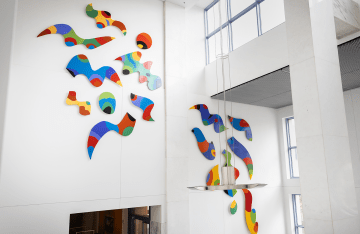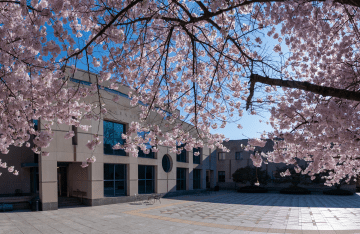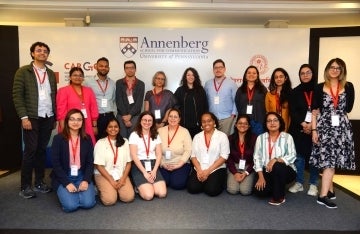Graduate Students Present Research Projects from SummerCulture 2018 in Berlin
The program focused on how visual memory impacts the understanding of media practice under political intimidation.
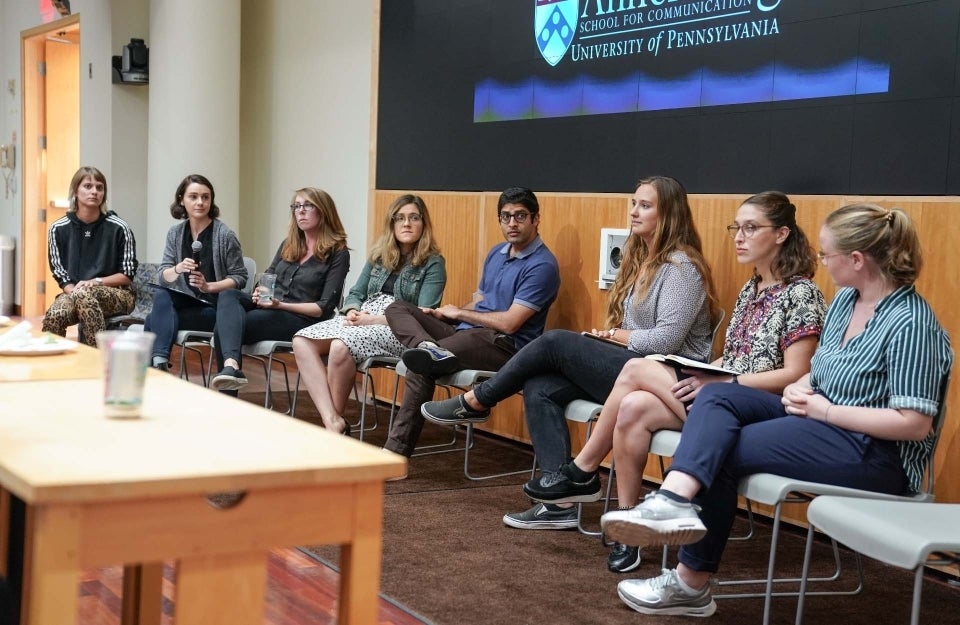
For two weeks this summer, six Annenberg doctoral students traveled to Berlin to immerse themselves in some of the most haunting episodes of modern German history: the Holocaust and the Cold War.
Led by Barbie Zelizer, Raymond Williams Professor of Communication and Director of the Center for Media at Risk, SummerCulture is a two-week intensive research experience for Annenberg graduate students held in a different foreign country each year.
This year’s program was hosted and co-taught by Marcus Funck, Associate Professor of History and Director of Graduate Studies at the Zentrum für Antisemitismusforschung, Technische Universitat, Berlin. The theme was “Mediating Visual Memory of Conflict, War and Genocide in Berlin Across the Holocaust and the Cold War." By examining how visual memory has been mediated in Berlin across the two main ruptures of contemporary German identity — the Holocaust and Cold War — SummerCulture 2018 aimed to clarify its centrality and track how two singular events have been mnemonically fused into one template for understanding media practice in the shadow of political intimidation.
The program was supported in part by a research and teaching grant from the USC Shoah Foundation for Advanced Genocide Research, which awarded Center Director Barbie Zelizer a 2017-2018 Rutman Teaching and Research Fellowship for her development of the course. SummerCulture 2018 taught students how to use the Foundation’s video archive, apply it to their projects, and engage in urban research on a broad range of visual mnemonic practices.
At a colloquium on September 26, doctoral candidate Samantha Oliver and doctoral students Sanjay Jolly, Muira McCammon, Hanna Morris, and Celeste Wagner presented their research from the trip. (Jennifer R. Henrichsen, who also attended SummerCulture, was not able to be present.)
They were joined by the German students from Zentrum für Antisemitismusforschung who participated in the program: Maria Kanitz, Hanna Brögeler, and Marlene Compton presented their research, while Fabio Tarfaoui, Andre Windhorst, and Mira Erdmann were part of the audience.
The students presented the following projects:
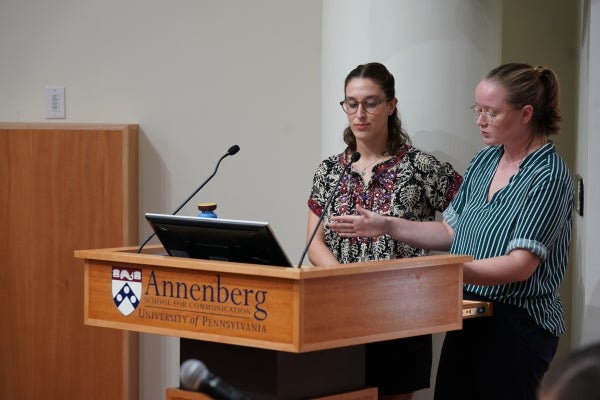
Celeste Wagner and Maria Kanitz — Women as the Symbolic (Re)builders of the Nation: Women’s Day Posters in East Germany (1945-1961)
Wagner and Kantiz analyzed the representation of women in East German women's day posters after the end of WWII and the building of the Berlin Wall. They argued that the celebration of women in these official art posters does not refer to a promotion of women's rights after the war. On the contrary, women are represented as a symbol of peace, progress and friendship in the service not of a women's movement but of a new socialist nation.
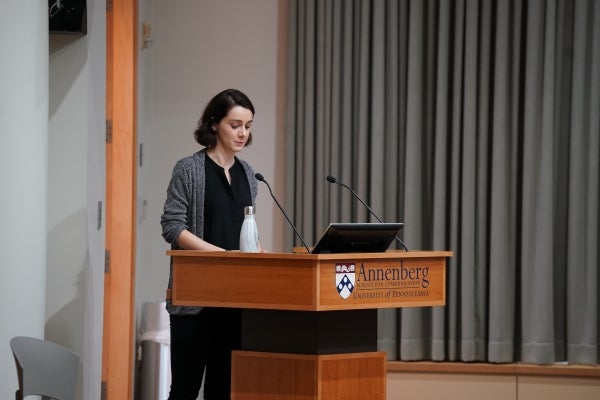
Hanna Morris — Aesthetic Disruptions in Everyday Life: Resolving the Contradictions of a Cosmopolitan Ideal in Contemporary Berlin
Morris's SummerCulture research traces the transformation of street art in Berlin over the past thirty years. She argues that this transformation reveals key insights into the material contradictions of the post-1989, cosmopolitan ideal and current “culture war” being waged in Germany. Through on-site fieldwork, interviews, discourse and visual analyses, Morris finds that “aesthetic disruptions” offer a radical means for resolving these contradictions by rupturing the neoliberal mode of governance on the scale of everyday life.
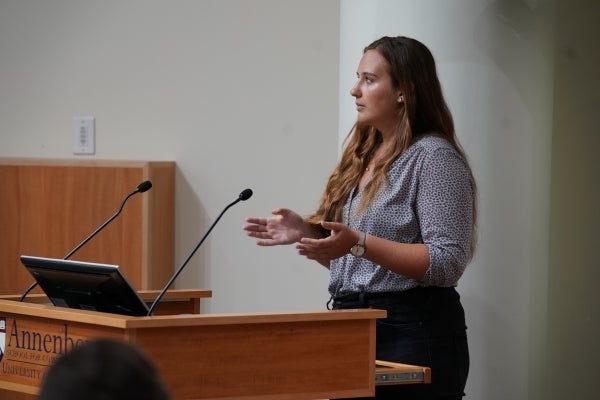
Marlene Compton — Commemorative Culture and Remembering War at the Gymnasium Steglitz
Compton analyzed war commemoration memorials at the German secondary school Gymnasium Steiglitz, a school she attended. These memorials to World War 1 and 2 celebrated the fallen German soldier, and as a result, also celebrate Nazis. In explaining the large number of war memorials at the school, Compton talked about the man behind them, Fritz Sommer, who was known as the "essence of the school" and was himself passionate about Nazi ideology.
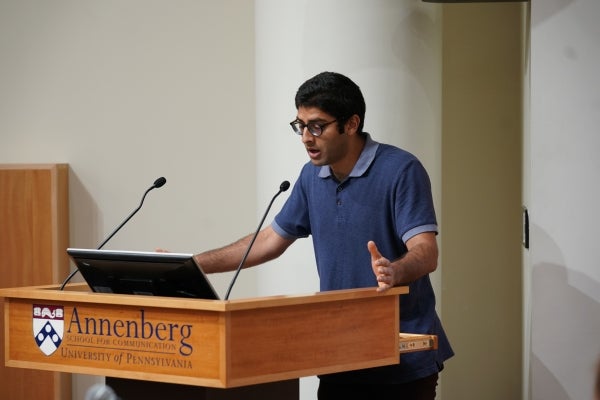
Sanjay Jolly — The Visual Everyday in Postcolonial Berlin
Jolly examined how Germany's colonial past is textured into Berlin's urban spaces and how the struggles over these spaces have been playing out in German civil society. Unlike the Shoah, Germany's colonial-era atrocities - including the genocide against the Herero and Nama in Namibia between 1904 and 1908 - have rarely been invoked as a central feature of German history and identity. The centennial of German atrocities in Namibia led to a fervor of discourse about and interest in Germany's colonial past, as well as significant confrontations over the place of colonialism within German national memory. Using interviews with activists and visual ethnographies at museums, public monuments, and urban infrastructures, Jolly argues that the political struggles over colonial memory and urban space in Berlin are by and large struggles over the construction of German and Afro-German identities.
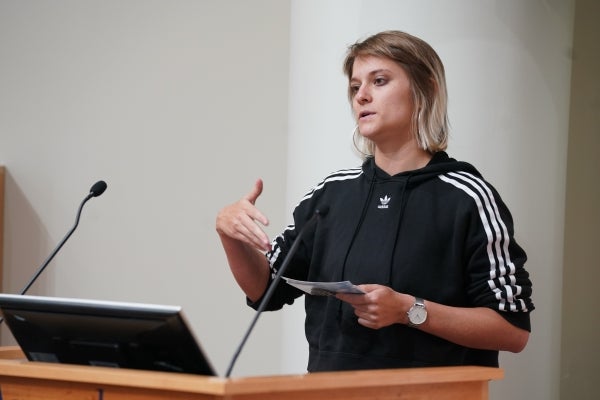
Hanna Brögeler — Holocaust Remembrance in Germany: Analyzing the Guestbook of 2017/18 Topography of Terror in Berlin
For her project, Brögeler analyzed a 1200-entry guestbook from the Topography of Terror, a museum in Berlin on the site of what served as the SS Main Security Office and headquarters from 1933-45. She explored visitors' reaction to the museum through the comments they left behind over a period of three months. She was able to group them into categories, including gratitude for the museum, religious comments, political demands, platitudes, comparisons, touristy remarks, and pure antisemitism.
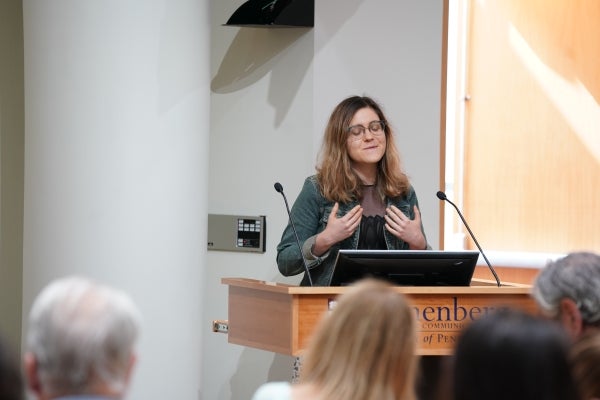
Muira McCammon — Fragments of the Führer (Bunker): A Multi-Methods Mnemonic Exploration in Post-War Berlin
McCammon conducted a research project on the cartography of the post-war German memory boom, focusing on the fate of the Führerbunker. This investigation sought to evaluate how visuals of Hitler’s bunker have been transformed, referenced, and represented over time in museums, online media, and at the site of the original bunker and to examine some of the practices that have enabled these renderings. This ongoing research probes the notion of post-Holocaust erasure, power relations in a mnemonic context, the politics of space, and the mechanisms memory agents, including journalists, activists, museum curators, and others, seek to employ in order to diminish, rename, reframe, and reconstitute the spaces that Hitler inhabited.
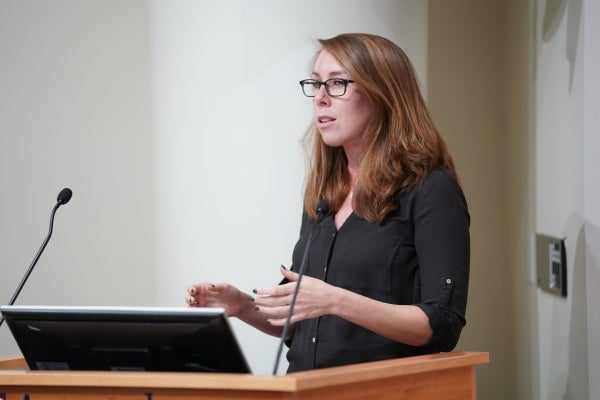
Samantha Oliver — Reckoning with the Cold War in Berlin’s Memorial Landscape
Oliver's project focuses on how commemoration of the National Socialist/Nazi era impacts and shapes commemoration of the Cold War and a divided Germany in Berlin. She argues that debates about how best to deal with and remember the Nazi past led to the development of a set of unarticulated commemorative logics (i.e. certain norms, standards, and ideas) that went on to shape remembrance of the Cold War. She articulates these logics specifically in the context of the Berlin Wall Memorial Complex, and in the presentation she focused on the logic of site specificity, and how this limits the kind of stories that are told and commemorated, is unable to accommodate larger narratives and contexts (such as the CW’s relationship to the Nazi era, broader international context), and reduces official commemoration of the Cold War/a divided Germany to remembrance of the Berlin Wall.

